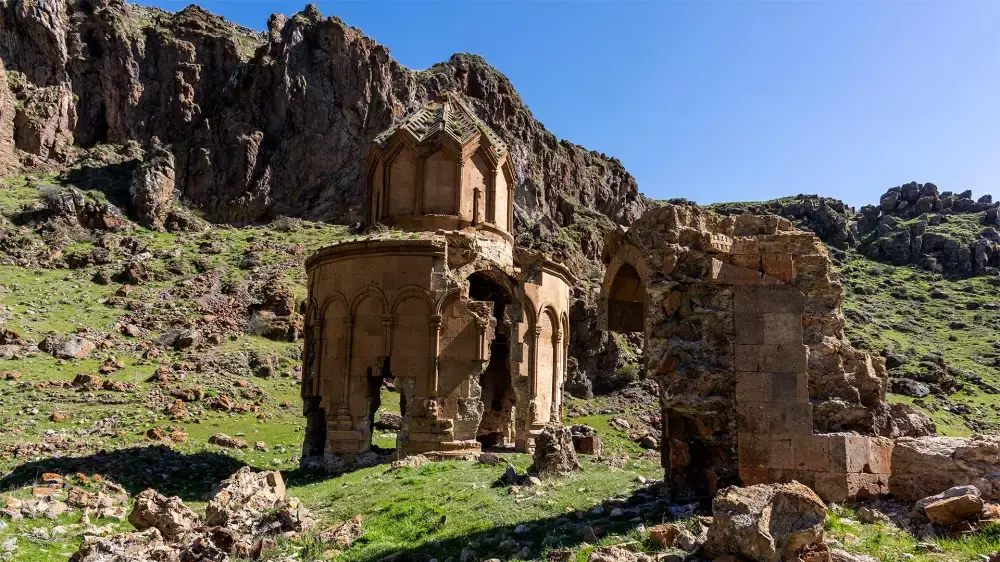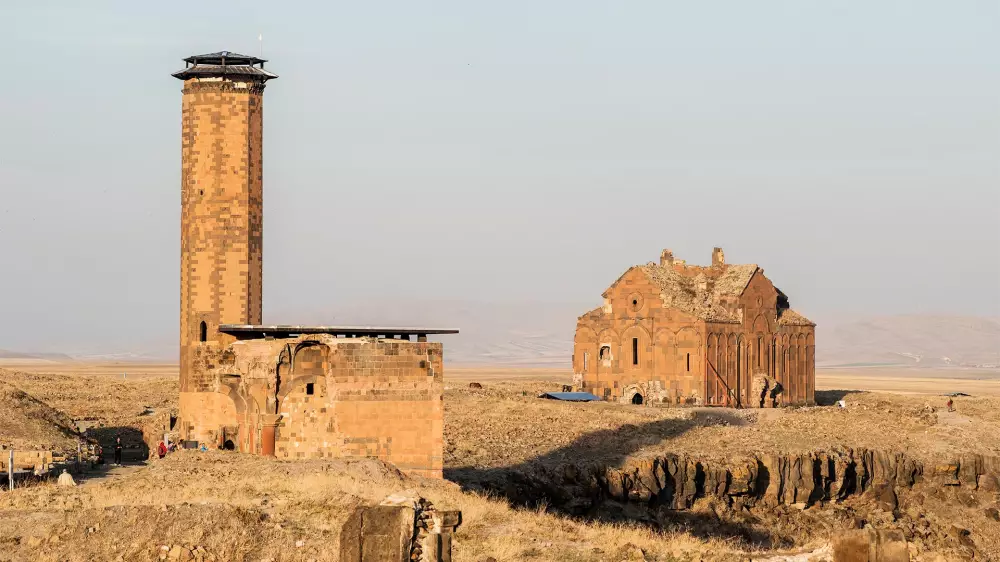
Kars From Past to Present
A Serhat City: Kars
How about going on a journey from the past to the present of Kars, which has been the scene of wars and occupations throughout its history due to its geopolitical location? Let's start by giving you some specific information: Kars, which is called the "City of Soldiers", "City of Pashas" or "City of Serhat" due to its location, because of the wars it went through; It is the city with the 'oldest Turkish name' in Turkey!
If we managed to get your attention, let's get started!
BC Period
The Urartians leave the first traces of civilization in Kars, whose history goes back 5000 years. In this time period, which corresponds to the 9th and 6th centuries BC, the city also experiences its Golden Age. Maybe “I don't believe until I see it!” you say, but we will testify that this city was created by the best architects of every era! Think about it, even the water channels built 2800 years ago still maintain their functionality!
Of course, such a beautiful city cannot be left, neither did the Persians. While the periods when the Urartians took trade and culture and made the city a center were endless, the Persians took Kars and made it an Anatolian province. The great emperor Alexander the Great, who always got what he wanted but worshiped the money that plagues us all today, came after him and this beautiful city to the Persians. Immediately after, the Hellenistic period of Kars began. It is filled with beautiful Hellenistic works, overflowing.
What would you do in the worldly business, will it not be left to Sultan Süleyman, but to Alexander the Great? King of Tigran II in the 1st century BC. Tigran took the city. Not only that, he spread from Cappadocia to Lebanon and established an Armenian Kingdom here. Of course, Rome was not left behind. He came to the beautiful Anatolian lands using the famine in Europe as an excuse. He saw fit to give the name Anatolia to these places he conquered step by step.
Kars of Rome, Rome of Kars
We are now in the 4th century AD. For the next 200 years, Rome took the Armenians in Kars under its control. After the last two centuries, the Persians attacked the region and the city came under the rule of the Umayyads from the 7th century, and the Abbasids right after.
Golden age
When the dusty pages of history show the 10th century, Armenians appear on the stage again. That's when the Golden Age begins on the territory of the city. They surround Kars with their magnificent architecture. They moved the campus to Ani, also known as the "City with 1001 Churches". Ani, which is on the Silk Road, thus carries the commercial success of the city beyond the horizons and today's Ani Ancient City was founded by the Armenians.
City of Turks
After a long time, the Turks come to the border gates of Anatolia. The love of Kars, which started in the Anatolian Seljuk State, later moved to the hearts of the Mongols, Ilkhanids, Celayirs, Timurs, Karakoyunlus, Akkoyunlus, Safavids and finally to the hearts of Suleiman the Magnificent.
Kars became Ottoman lands in 1534. Immediately after, the whole city is organized as a military base. It remains this way until the 1877-1878 Ottoman-Russian War. After this battle, which is also known as the 93 War in the pages of history, the city was lost and was occupied by the Russians for 40 years.
Traces of the Russians in Kars
Until the city of Kars was included in the territory of the Republic of Turkey in 1920, the Russians almost restored the city as the second Moscow. Since the Tsar of the time wanted a Baltic architectural style throughout, he specially brought architects from the Netherlands to give the city its new look. Buildings in the Baltic architectural style, which add mysticism and mysterious air to the cold of the city's continental climate, have survived to the present day.
Victory of Kazım Karabekir Pasha
We have progressed as far as we can say recent history. We are now in the 1900s. After the First World War, Kazım Karabekir Pasha, the 15th Corps Commander, who was one of the most important soldiers of the Turkish people who rebelled under the leadership of Head Teacher Gazi Mustafa Kemal Atatürk, saves the ancient city on October 30, 1920. Pasha, who had the Turkish flag hoisted on the city's castle right after, had the beauties officially returned to Turkey with the Moscow Agreement signed with the Russian generals on March 16, 1921.



